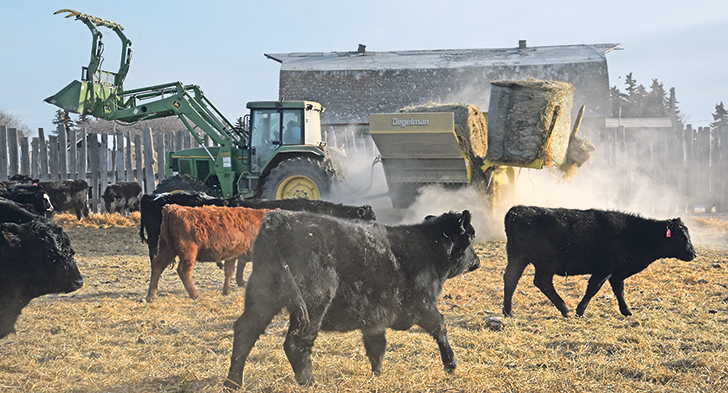NASHVILLE, Tenn. — Failing to get pregnant during the breeding season is the top reason cows are removed from a herd.
Longevity in the herd starts with heifers that were developed into reproductive animals over the long haul, said Cliff Lamb of the University of Florida.
“Heifers that become pregnant early in first breeding season will remain in the herd longer and are more productive,” he said during an education session at the recent National Cattlemen’s Beef Association convention in Nashville.
“Pregnancy has four times greater economic impact on an operation than any other production trait,” he said.
Read Also

Feds propose overhaul of chronic wasting disease control program
Chronic Wasting disease control program getting updated by Canadian Food Inspection Agency with feedback encouraged from producers.
Heifers are expected to calve at two years of age, calve without assistance and rebreed in a timely fashion. Only about 30 percent of them stay around long enough to give birth to a third calf.
Several factors affect fertility in heifers:
- Genetics: Some breeds are slower to reach puberty. British breeds tend to reach puberty earlier.
- Body weight and age: Replacement heifers should reach 65 to 75 percent of their mature weight by the time they are bred at 14 to 15 months of age. They should gain an average of 1.25 to 1.75 pounds per day from weaning to breeding. For most breeds and crossbreds, they should weigh 650 to 850 lb. at breeding time.
- Nutritional management: Grain-based versus forage-based diet for heifer development may depend on the individual production system. The last three months before breeding are the most critical for nutrition. It is important to make sure heifers do not get too fat. Pasture raised animals have a different environment and are healthier over the long term. However, pastures are not always at a perfect stage when breeding season approaches.
- Animal handling and temperament: Remove animals with disposition problems. Crazy animals affect the behaviour of the entire herd, said Lamb.
The effect of handling on performance and puberty has been studied and showed cattle that were handled more often became calmer. They attained puberty sooner and got pregnant sooner than the animals left on their own. Low-stress handling helps improve pregnancy rates.
Heifers should become pregnant within the first 25 days of the breeding season. If the calving season is tightened up, the resulting cattle are more uniform and have more value in the marketplace.
Too many heifers are selected because they are pretty, said Lamb.
“More often than not, the animal that we define as the best animal for whatever reasons never makes it to the top 25 percent. But how many people keep them anyway,” he said.
“I don’t care what the heifers look like in terms of their phenotype. If they become pregnant that is more important to me,” he said.
At the University of Florida, the herd was managed on the basis of fertility. Over the long term, the herd has improved and is a profitable unit.
“Those heifers that became pregnant in the first 21 days of the breeding season weaned three quarters of a calf more in their lifetime than those females that became pregnant after the first 21 days,” he said.
The criteria to stay in the herd means every female has to calve by 24 months of age. Every cow must calve every year without assistance. Cows must provide the resources to raise good calves and the offspring must be genetically capable to perform and gain well. Cows must maintain their body condition scores, however, an individual’s body weight can range 300 lb. in a year. It is better to assess body condition throughout the year to take into account seasonal weight fluctuations.
Synchronization where heifers receive hormones orally or intravaginally to induce puberty, is a useful tool.
“Don’t use synchronization as the only way to get semen in the cow. Think of it as a reproductive management tool to start animals cycling,” Lamb said.
Synchronization systems have been around for 25 years and give every heifer a chance to get pregnant. Under this system, probably 15 percent more pregnancies could result compared to waiting for animals to reach standing heat and then artificially inseminating them.
Using artificial insemination can save money because the cost of maintaining and managing bulls is lowered.
“A bull is freeloading nine months of the year,” he said.
For further information on synchronization visit beefrepro.unl.edu/resources.html.
Most females likely become pregnant but early embryonic loss can happen and the cows come back into heat.
This might happen because of genetic incompatibility between sire and dam or the female was stressed by heat, cold, handling or transportation.
The best time to transport heifers is in the seven-day period after insemination. The worst time is in the three to four weeks after insemination.
“If you can wait until the embryo becomes a fetus around day 42 or 43, then the fetus is more stable,” he said.
















